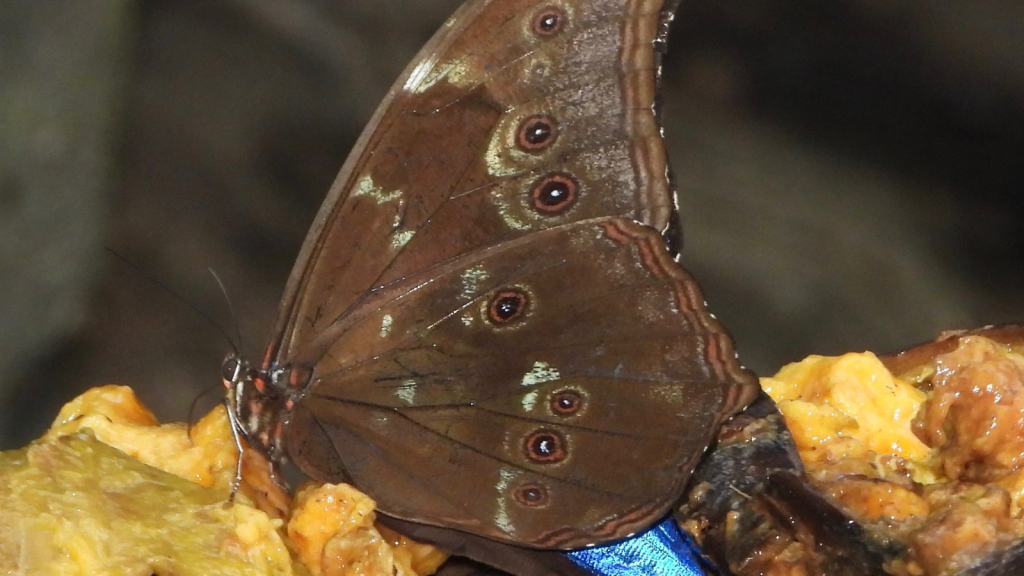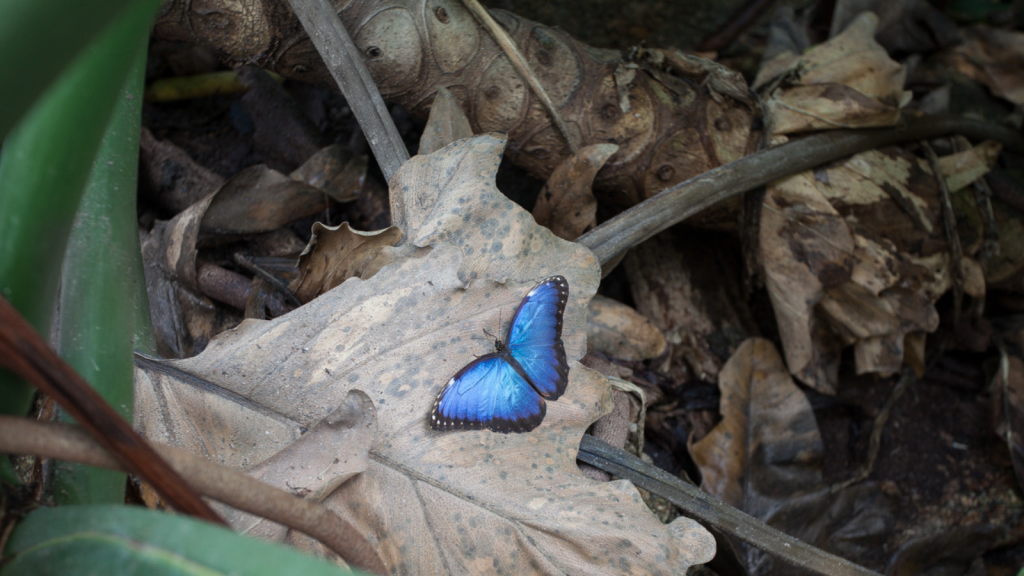The blue morpho butterfly is a true marvel of nature, captivating onlookers with its brilliant blue wings. These stunning insects flutter through the rainforests of Central and South America, bringing a flash of colour to the lush green canopy. But there’s more to these butterflies than meets the eye. From their clever defence mechanisms to their surprising diet, blue morphos are full of surprises. Let’s explore some fascinating facts about these beautiful creatures and their eye-catching wings.
Iridescent Illusion

The blue morpho’s wings aren’t actually blue at all. The vibrant colour we see is created by light bouncing off microscopic scales on their wings. This effect, called structural coloration, is similar to how soap bubbles shimmer in the sunlight. Interestingly, if you were to grind up a blue morpho’s wing, the resulting powder would be brown, not blue.
Massive Wingspan

Blue morphos are one of the largest butterflies in the world. Their wingspan can reach up to 20 centimetres, about the size of a dinner plate. This impressive size makes them easy to spot as they glide through the forest. Despite their large size, blue morphos are surprisingly agile flyers, able to navigate through dense vegetation with ease.
Camouflage Experts

While the top of their wings are bright blue, the underside is a dull brown with eyespots. When at rest with their wings closed, they blend in perfectly with tree bark, hiding from predators. The eyespots on their wings serve a dual purpose: they can startle predators and draw attacks away from the butterfly’s vital body parts.
Tasty Treats

As caterpillars, blue morphos munch on plants. But as adults, they prefer to drink their food. They use their long, straw-like proboscis to sip on rotting fruit juices, tree sap, and even mud puddles for nutrients. Their proboscis is actually two separate parts that zip together to form a tube when the butterfly needs to feed.
Short but Sweet Life

Adult blue morphos only live for about two to three weeks. In this short time, they must find a mate and lay eggs to continue their species. Talk about living life in the fast lane! Female blue morphos can lay up to 100 eggs in their short lifetime, usually placing them on the underside of leaves.
Butterfly Superpower

Blue morphos have incredible eyesight. They can see in all directions at once and can even detect ultraviolet light, which humans can’t see. This helps them find food and avoid predators. Their compound eyes are made up of thousands of individual lenses, giving them a fragmented view of the world around them.
Nature’s Recyclers

These butterflies help keep the forest clean. By feeding on rotting fruit, they prevent the spread of mould and fungi that could harm other plants and animals. This role in decomposition makes them an important part of the rainforest ecosystem, contributing to nutrient cycling.
Seasonal Shifts

Blue morphos aren’t always around. They have specific breeding seasons, usually coinciding with the dry season in their habitat. This ensures the best conditions for their offspring to survive. The exact timing of these breeding seasons can vary depending on the specific region and local climate conditions.
Ancient Admirers

People have been fascinated by blue morphos for centuries. Ancient Aztec and Mayan cultures used their shimmering wings in artwork and jewellery, believing they held mystical powers. In some cultures, it was believed that blue morphos could grant wishes or carry messages to the dead.
Chemical Warfare

When threatened, blue morpho caterpillars can release a foul-smelling liquid from glands on their bodies. This nasty surprise helps keep predators at bay. The liquid contains compounds that can irritate the eyes and mucous membranes of potential predators, providing an effective defence mechanism.
Masters of Disguise

The caterpillars are just as impressive as the adults. They’re reddish-brown with bright green spots, helping them blend in with the leaves they feed on. Some even resemble toxic caterpillars to avoid being eaten. This mimicry is so effective that even experienced entomologists can sometimes mistake them for other species.
Butterfly Aromatherapy

Male blue morphos can release special scents to attract females during mating season. These pheromones are so powerful that females can detect them from several kilometres away. The males produce these scents using specialised scales on their wings, which they can flutter to disperse the attractive aroma.
Rainforest Ambassadors

Due to their beauty and size, blue morphos are often featured in butterfly houses and zoos worldwide. This helps raise awareness about the importance of protecting rainforest habitats. Many conservation programmes use the blue morpho as a flagship species to educate the public about biodiversity and the need for habitat preservation.
Climate Change Concerns

Like many rainforest species, blue morphos are threatened by deforestation and climate change. Changes in temperature and rainfall patterns can disrupt their breeding cycles and food sources. Research has shown that even small changes in climate can affect the timing of butterfly emergence, potentially leading to mismatches with their food plants and other critical resources.
Becky is a fervent wildlife enthusiast and pet care expert with a diploma in canine nutrition. Her love for animals stretches beyond the domestic, embracing the wild tapestry of global fauna. With over a decade of experience in animal welfare, Becky lends her expertise to OutlandishOwl through insightful articles, captivating wildlife information, and invaluable guidance on pet nutrition. Her work embodies a deep commitment to understanding the intricate lives of animals and a passion for educating others on sustaining natural habitats. Becky's hands-on conservation efforts and her knack for translating complex dietary science into practical pet feeding tips make her an indispensable voice for creatures great and small.




